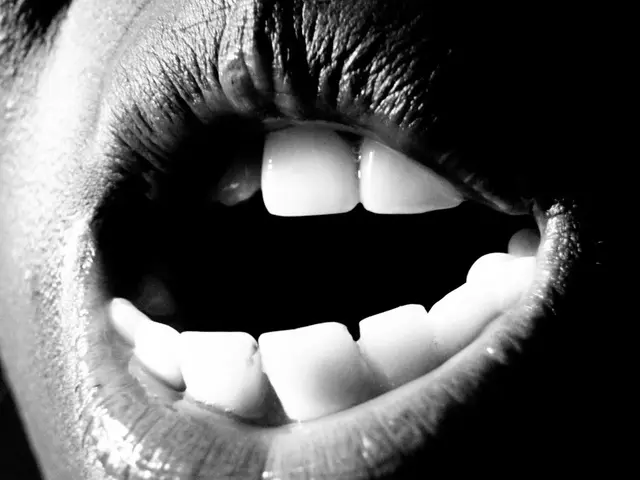Lewy Body Dementia Exploration: Signs, Therapies, and Additional Details
Lewy Body Dementia (LBD) is a progressive condition that affects an estimated 1.4 million people in the United States. This neurological disorder, characterised by unusual brain deposits of a protein known as alpha-synuclein, called Lewy bodies, is the third most common type of dementia, following vascular dementia and Alzheimer's disease.
Symptoms and Initial Presentations
LBD can cause a variety of symptoms, including cognitive, behavioral, and movement issues. Cognitive symptoms may include visual hallucinations, confusion, drowsiness, difficulty concentrating, memory loss, and difficulties with language, numbers, planning, problem-solving, and spatial abilities. Behavioral and mood symptoms can range from anxiety, delusions, depression, loss of interest or motivation, paranoia, restlessness, and changes in appetite. Movement symptoms may include difficulty swallowing, lack of coordination, stooped posture, a slow or shuffling walk, handwriting that is smaller than usual, stiff muscles, tremors, weak voice, and difficulty with balance and mobility.
The key difference between Dementia with Lewy bodies (DLB) and Parkinson's disease dementia (PDD) lies in the timing and sequence of the appearance of cognitive and motor symptoms. In DLB, cognitive symptoms such as thinking problems and visual hallucinations appear at the same time or before the onset of motor symptoms. In contrast, in PDD, the person initially develops motor symptoms characteristic of Parkinson’s disease, which precede cognitive decline by at least one year or more.
Progression and Management
Both forms of LBD result from the same brain changes, but the clinical distinction is based on the temporal relationship between cognitive and motor symptoms. DLB progression tends to involve early fluctuating cognition and early visual hallucinations, with parkinsonism symptoms developing alongside or after cognitive decline. PDD is considered a continuation of Parkinson’s disease progression, where cognitive decline and dementia develop gradually after established movement disorder.
While there is no way to prevent LBD, treatments, including medications, physical therapy, and counseling, may help slow the condition's progression. Treatment options for LBD may include drugs called cholinesterase inhibitors, atypical antipsychotics, carbidopa-levodopa, physical therapy and exercise, and selective serotonin reuptake inhibitors (SSRIs).
Support and Care
Establishing structure and routines, simplifying tasks, changing the environment, providing enough stimulation, encouraging social and physical activities, and offering a balanced diet of appropriate foods can help ease symptoms and improve the quality of life for people with LBD. Aromatherapy, art therapy, massage therapy, music therapy, pet therapy, and strengthening exercises like yoga may help manage anxiety and mood in people with LBD.
Caregivers play a crucial role in supporting individuals with LBD. They should take steps to look after themselves to avoid burnout, including exercising regularly, eating a balanced diet, getting enough rest and sleep, making time for hobbies and enjoyable activities, joining a support group for caregivers, considering the use of in-home health services, practicing stress relief strategies, speaking with a doctor or mental health professional if feeling overly stressed, anxious, or unwell.
Resources and Organizations
The Lewy Body Dementia Association, Alzheimer's Association, Eldercare Locator, and Caring.com are organizations that can provide additional help and support for people with LBD and their loved ones. These organisations offer resources, support groups, and information on the latest research and treatments.
In conclusion, understanding Lewy Body Dementia is crucial for early diagnosis, appropriate treatment, and effective care. With the right support and resources, individuals with LBD and their loved ones can navigate this challenging journey.
- Lewy Body Dementia (LBD) is a progressive neurological disorder that affects an estimated 1.4 million people in the United States, characterized by unusual brain deposits of alpha-synuclein.
- This third most common type of dementia often presents with cognitive symptoms such as visual hallucinations, confusion, drowsiness, memory loss, language difficulties, and spatial challenges.
- Behavioral and mood symptoms may include anxiety, delusions, depression, loss of interest, paranoia, restlessness, and changes in appetite.
- Movement symptoms can include difficulty swallowing, lack of coordination, stooped posture, slowed or shuffling walk, small handwriting, stiff muscles, tremors, weak voice, and balance and mobility issues.
- The key difference between Dementia with Lewy bodies (DLB) and Parkinson's disease dementia (PDD) lies in the timing and sequence of the appearance of cognitive and motor symptoms.
- DLB progression tends to involve early fluctuating cognition and early visual hallucinations, whereas in PDD, motor symptoms characteristic of Parkinson’s disease precede cognitive decline.
- While there's no way to prevent LBD, treatments, including medications, physical therapy, and counseling, can help slow its progression. Caregivers should also prioritize their own health and wellness, exercising regularly, eating a balanced diet, getting enough rest, seeking support, and practicing stress relief strategies.





